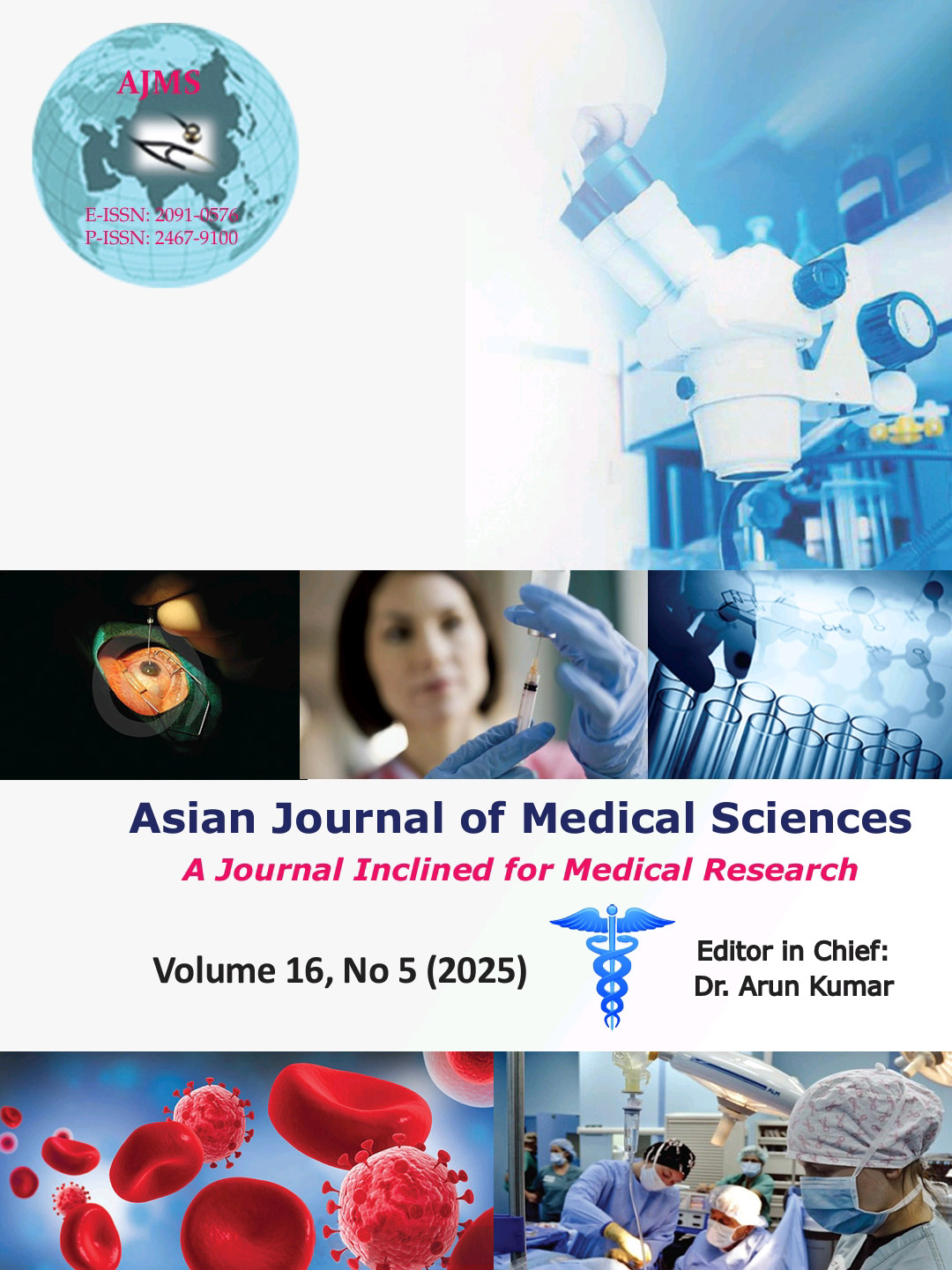Pulmonary function test in children with asthma of 6–14 years visiting asthma and allergy clinic at Birat medical college teaching hospital
DOI:
https://doi.org/10.71152/ajms.v16i5.4500Keywords:
Asthma; Child; Pulmonary function test; SpirometryAbstract
Background: An obstructive pattern and positive bronchodilator response are the typical findings of spirometry in asthmatic children. However, this pattern fails to meet the diagnostic criteria recommended by various guidelines.
Aims and Objectives: This article aims to study the spirometry pattern in asthmatic children attending asthma and allergy clinics.
Materials and Methods: This was an observational cross-sectional study that included 75 asthmatic children between 6 and 14 years of age visiting the Asthma and Allergy Clinic at the Pediatric Department who needed a spirometry test. Patterns of spirometry were studied and analyzed using standard statistical tests.
Results: Among 75 asthmatic children, there were 44 (58.7%) males. Normal spirometry pattern was found in 20 (26.7%) of all cases, obstructive in 22 (29.3%), mixed in 23 (30.7%), and restrictive in 10 (13.3%) of cases. Forced expiratory volume in 1 s reversibility >12% was found in 23 (30.7%), whereas forced expiratory flow (FEF) between 25% and 75% of forced vital capacity (FEF25–75%) <60% in 26 (34.7%) and its post-bronchodilator change >30% in 27 (36%) of cases.
Conclusion: This study highlights the abnormal spirometry pattern in the majority of children with asthma. Abnormal FEF of 25–75% and its positive post-bronchodilator changes were also observed in a considerable proportion of cases, emphasizing the importance of this pattern for the diagnosis of asthma in children.
Downloads
Downloads
Published
How to Cite
Issue
Section
License
Copyright (c) 2025 Asian Journal of Medical Sciences

This work is licensed under a Creative Commons Attribution-NonCommercial-NoDerivatives 4.0 International License.
Authors who publish with this journal agree to the following terms:
- The journal holds copyright and publishes the work under a Creative Commons CC-BY-NC license that permits use, distribution and reprduction in any medium, provided the original work is properly cited and is not used for commercial purposes. The journal should be recognised as the original publisher of this work.
- Authors are able to enter into separate, additional contractual arrangements for the non-exclusive distribution of the journal's published version of the work (e.g., post it to an institutional repository or publish it in a book), with an acknowledgement of its initial publication in this journal.
- Authors are permitted and encouraged to post their work online (e.g., in institutional repositories or on their website) prior to and during the submission process, as it can lead to productive exchanges, as well as earlier and greater citation of published work (See The Effect of Open Access).





